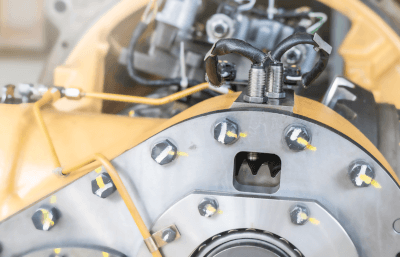What Is a Speed Sensor?

Speed sensors are installed in vehicles such as automobiles, motorcycles, railcars, ships, and aircraft. They can detect and measure the speed at which these vehicles are moving.
Speed sensors include those that determine speed based on the angular velocity of the wheels (how much the wheels turn per unit time), those that use the Doppler effect, or the phase shift between reflected light and sound waves. There are also those that use pitot tubes to measure the speed of fluid objects such as air and water, and GPS speedometers that use signals sent from satellites in orbit.
Uses of Speed Sensors
Speed sensors, as mentioned above, are used to detect and measure the speed of movement of various types of vehicles.
However, since vessel operations are generally subject to numerous external forces and are complex and varied, and require careful maneuvering in ports and harbors, speed sensors are installed in various parts of vessels as follows:
When large vessels berth, it is necessary to control the inertia of the huge hull to optimize the berthing speed.
The vessel berthing speed meter measures the berthing distance and speed at the bow and stern, respectively, and displays data such as berthing speed and angle to assist in safe berthing.
Unlike land vehicles, aircraft cannot measure ground speed but instead use pitot tubes to measure airspeed, which is the speed relative to the air.
Accurate measurement of airspeed (the speed at which the wing overtakes the air) is the most important indicator for understanding lift, which is a factor in flight continuity.
Principles of Speed Sensors
Speed sensors that utilize the Doppler effect are used to measure water speed on ships.
The Doppler effect refers to a phenomenon in which when a sound source (note: radio waves and light cannot be used underwater because they are significantly attenuated compared to ultrasonic waves) and a sensor are relatively close to each other. The frequency is perceived to be higher than when there is no relative motion, and when they are moving away from each other, the frequency is perceived to be lower.
This frequency shift, or Doppler shift of water particles, is used to calculate water velocity.
In aircraft, airspeed is measured by a pitot tube mounted on the fuselage.
The pitot tube draws air in through a hole in its tip and measures airspeed using the difference between the wind pressure from outside and the atmospheric pressure at that location.
In actual passenger aircraft, pitot tubes are used to estimate airspeed, which is then corrected using a computer to obtain a more accurate airspeed for use in flight.